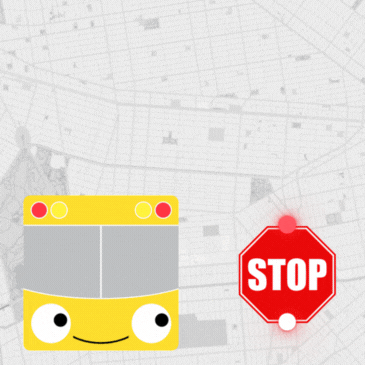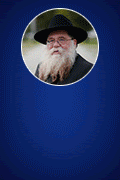Rashi comments (8:2) that when Moses' brother, Aaron the High Priest, felt bad because G-d did not ask him to bring an offering for the Tabernacle like the other heads of the tribes (Num. 7:1-83), G-d consoled him:
“Don't worry, you get to light the Menora, which is even greater!”
And to this very day the Menora is undoubtedly the best known vessel in the Holy Temple.
But it is also the most misrepresented...
The Weekly Sedra – Behaalotecha
This section begins with the commandment of lighting the Menora.
Rashi comments (8:2) that when Moses’ brother, Aaron the High Priest, felt bad because G-d did not ask him to bring an offering for the Tabernacle like the other heads of the tribes (Num. 7:1-83), G-d consoled him:
“Don’t worry, you get to light the Menora, which is even greater!”
And to this very day the Menora is undoubtedly the best known vessel in the Holy Temple.
But it is also the most misrepresented…
To begin with it is always depicted as having curved branches (even by religious people), but in fact the branches were straight.
Secondly, contrary to popular opinion, its purpose was not to light up the Temple. In fact G-d said its cups containing the wicks should be pointed inward, toward the central column, so the world would know it wasn’t for light. (Ex. 25:37)
And another strange thing is that Maimonides (Rabbi Moses ben Maamon or ‘Rambam’) in his famous detailed sketch of the Menora, portrays the cups like triangles with the wide side (up side) down, making it impossible for them to receive oil or even a wick!
The Lubavitcher Rebbe explained why: although the cups of the Menora were really wide side up, the Rambam wanted to stress that MAIN purpose of the Menora (and the Jewish people) was (and is) only to GIVE; to pour out blessings.
To understand this here is a story (Otzar Sipury Chabad 1:58).
The Baal Shem Tov (Besht for short) was the grand master of Judaism. Besides knowing all commentaries and deepest secrets of the Torah, he also knew the secret purpose of each and every creation.
One of the Besht’s Chassidim was a very simply fellow called Moshe Shlomo. This Moshe Shlomo, as much as he tried, could barely read Hebrew and certainly had no ability to learn Torah. But, on the other hand, what he lacked in understanding he made up in earnestness and simple faith in G-d.
He believed that just as G-d sent Elijah the Prophet and Moses to do miracles to help Jews, so He sent the Baal Shem Tov to help the Jewish people.
But as often as he begged the Besht to bless him with children the latter would only respond with blessings for riches, health, and long life. But no children.
So, although he became a very wealthy man Moshe Shlomo was miserable. “What is life or all this money worth if I have no children?” he and his wife complained.
One day, the Besht mysteriously announced that he wanted Moshe Shlomo, his wife and ten of the Chassidim to accompany him on a trip.
Moshe Shlomo took upon himself all the expenses.
He rented three wagons, one for the Besht, one for the Chassidim and one for him and his wife. Six days later, after spending Shabbat in a village on the way, they reached a small town near the large city of Brody where the Besht announced that they had reached their destination and should get out of the wagons.
The Besht began walking down the street followed by his entourage and stopped the first Jewish child he saw.
“What is your name?” the Besht asked.
“Boruch Moshe”. The child answered.
He thanked the child and then turned to three other young Jewish boys that happened to be passing by and asked their names.
“Boruch Moshe” said the first “I’m also Boruch Moshe” said the second “And so am I; Boruch Moshe” the third replied.
Again he thanked them and continued walking.
Every Jewish child they passed the Besht stopped and asked the same question… and each time the answer was the same. “Each child was called Boruch Moshe.”
The Chassidim were really amazed. They had never seen anything like it; what would cause all the parents to give all their children the same exact name? But they were more amazed when the Besht asked a group of Jewish girls and each and every one answered they were called “Bracha Leah”
They reasoned that this Boruch Moshe and Bracha Leah must have been very holy Tzadikim and the parents of these children wanted some of it to cling to their offspring.
Then the Besht stopped before a house where the sweet sound of children learning Torah emanated from the windows.
He motioned that the Chassidim should wait outside and only Moshe Shlomo and his wife should follow him in.
In the house were three classrooms. The Besht entered one of them where some twenty children were seated and when the teacher noticed his entrance he immediately stood up, as did the children, and welcomed their holy visitor.
Again the Besht asked each of the children their names ten replied Boruch Moshe and the rest had either Boruch or Moshe as their first names.
He thanked them all, left the school and took his Chassidim to pray Mincha (the afternoon prayer) in a nearby Synagogue. Then after the prayer he stopped someone on the street and asked him if he could explain why all the children had the same names.
“Sure” he answered aloud so all the Chassidim could hear. “They are named after an old fellow and his wife that passed away some fifteen years ago. His name was Boruch Moshe and she was Bracha Leah.
”They were pretty simple folk, in fact they say that Boruch Moshe could barely read. But…..well, I’ll tell you the whole story how I heard it.
“This Boruch Moshe was born an only child some hundred years ago to a great scholar who was also the town butcher. They were old when he was born, so they were overjoyed to have a child but they were a bit disappointed when they realized that little Boruch Moshe had no ‘head’ for learning Torah.
”The boy wasn’t stupid, in fact his father taught him the butcher business and he was running the whole thing before he was fourteen years old, but try as he may, he just couldn’t learn Torah.
“Anyway, he really succeeded financially and had no trouble finding a wife. But to add to his troubles, after over fifteen years of marriage they still had no children and, coupled to the fact that he couldn’t learn Torah, it made his life almost unbearable.
”Then the story goes that one day he heard a Rabbi quote the Talmud that ‘anyone that teaches a young child Torah, it’s as though he gave birth to him’ and Boruch Moshe started crying. When the Rabbi asked him why he kept crying and answered, ‘Not only don’t I have any children of my own, I can’t even teach other people’s children Torah! Why…I can’t even READ Mishnaiot for my father’s Yor Tzite!!’
“So the Rabbi told him that it doesn’t mean that you, personally, have to do the teaching. You can even hire someone else to do the teaching! The main thing is to cause children to learn.
”When Boruch Moshe told his wife what the Rabbi said it transformed them into different people. On the spot they began hiring teachers and setting up ‘Cheders’ to teach Torah to children.
Each year Boruch Moshe succeeded even more in business until he was a very wealthy man but all the money went into those schools. In fact he and his wife lived in the same small hut they had when they got married and gave everything to Torah until in the course of time they had established over twelve schools that taught hundreds of children.
“In fact, I and my brothers, in fact almost everyone in these parts, owe all we know to Boruch Moshe and his wife.
”But the story goes that once Bracha Leah, Boruch’s wife, complained to him saying that after all they still really were childless and no one would remember them after they died. And when Boruch heard this he got angry for the first time in his life and said ‘If the holy Talmud says teaching children is like giving birth to them then we must believe with complete faith that we have EXACTLY the same connection to these children as parents!’
So when both Boruch and his wife died about fifteen years ago we all decided that we would all call our children after them, because, after all, they are their spiritual grandparents. And every year on the dates of their passing all of us go visit their graves as children do to their parents.
The Besht then turned to Moshe Shlomo and his wife and said “It says in Isaiah (56:5) ‘I will give to them in my house and within my walls a good name better than male and female children’. ‘My house’ is the Torah which is the home G-d. and ‘within my walls’ are the Jewish people’. If you teach children Torah the blessing of this sentence will fall on you.
And Moshe and his wife became benefactors to hundreds of Jewish children whose children were also called by their name.
This explains all of the above. The Jewish people are compared to the Menora in the Temple (see Lecuti Torah Bamidbar 29:3) and their purpose is to illuminate not just themselves or even just holy things, but rather the entire world.
The reason that the stars of our above story educated only Jewish children is because only until recently it was dangerous to wean gentiles from their false beliefs.
But the Lubavitcher Rebbe announced in 1983, that the danger has passed.
Today, like the straight arms of the Menora, we can directly educate ALL mankind that there is ONE Creator who is creating ALL being constantly. And the ONLY plan for His creation is the Torah with its seven Noahide commandments for the non-Jews.
This is the work of Moshiach; to illuminate the world as we say in the Alenu prayer thrice daily. We just have to do all we can to help bring….
Moshiach NOW!!













shoyn
"And another strange thing is that Maimonides (Rabbi Moses ben Maamon or ‘Rambam’) in his famous detailed sketch of the Menora, portrays the cups like triangles with the wide side (up side) down, making it impossible for them to receive oil or even a wick!
The Lubavitcher Rebbe explained why: although the cups of the Menora were really wide side up, the Rambam wanted to stress that MAIN purpose of the Menora (and the Jewish people) was (and is) only to GIVE; to pour out blessings."
If i’m not mistaken the above is not correct.
The cups that the rambam draws upside down are not the recepticles for the oil, but rather they are decorative only.
‘shlosho geviim meshukodiim bakone echod’, there were 3 such cups on every branch of the menorah.
See likutei sichos volume 21 page 164-166.